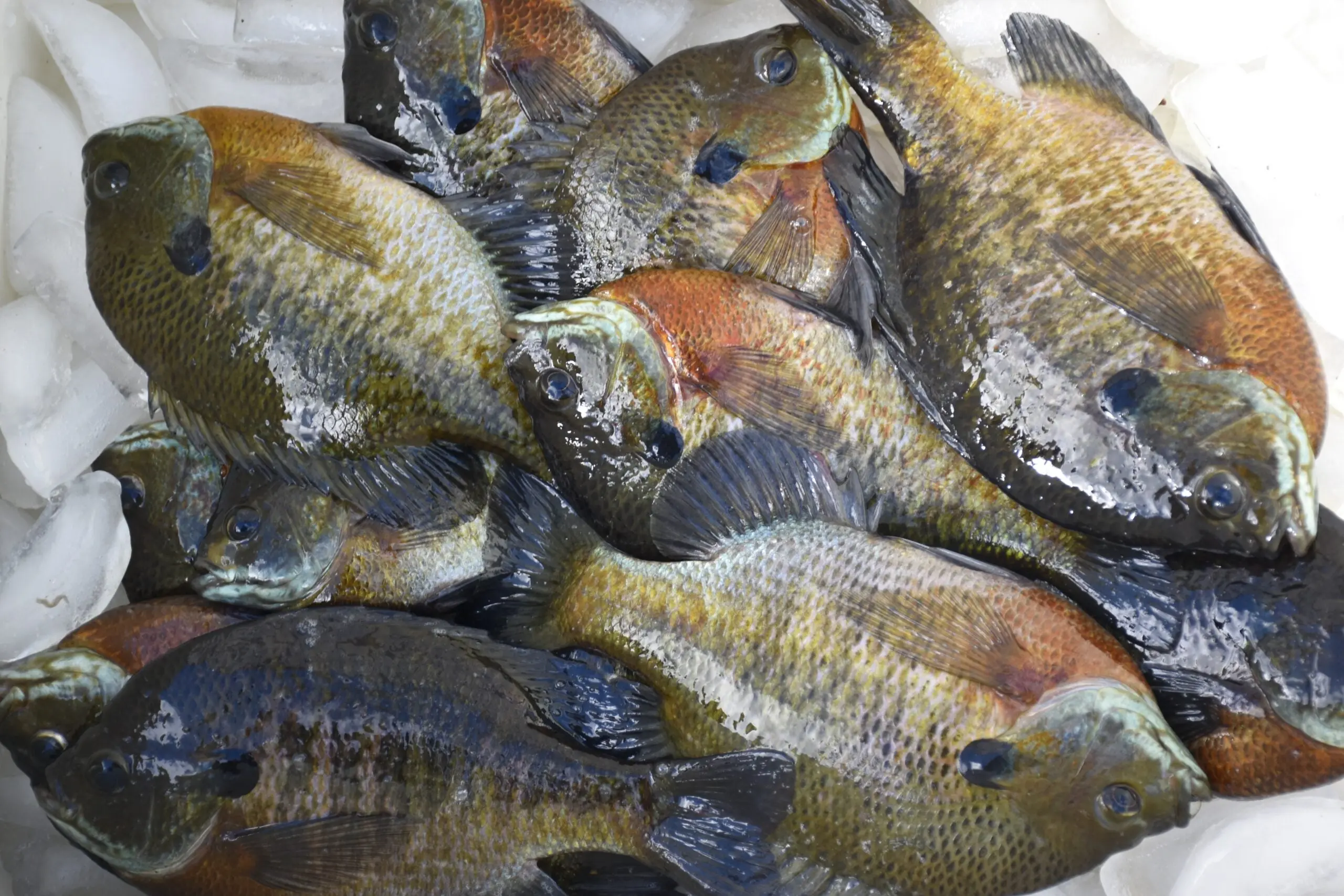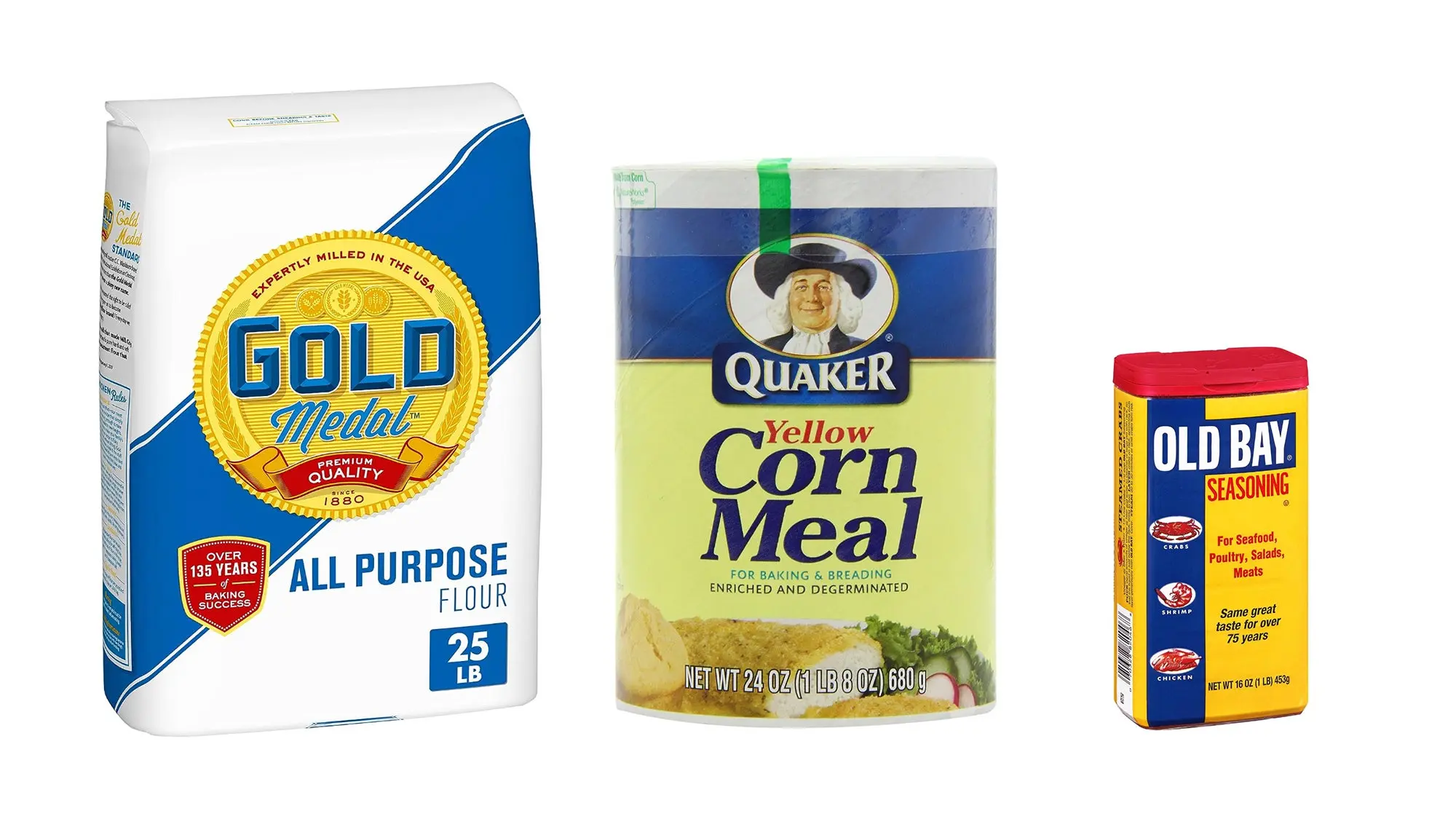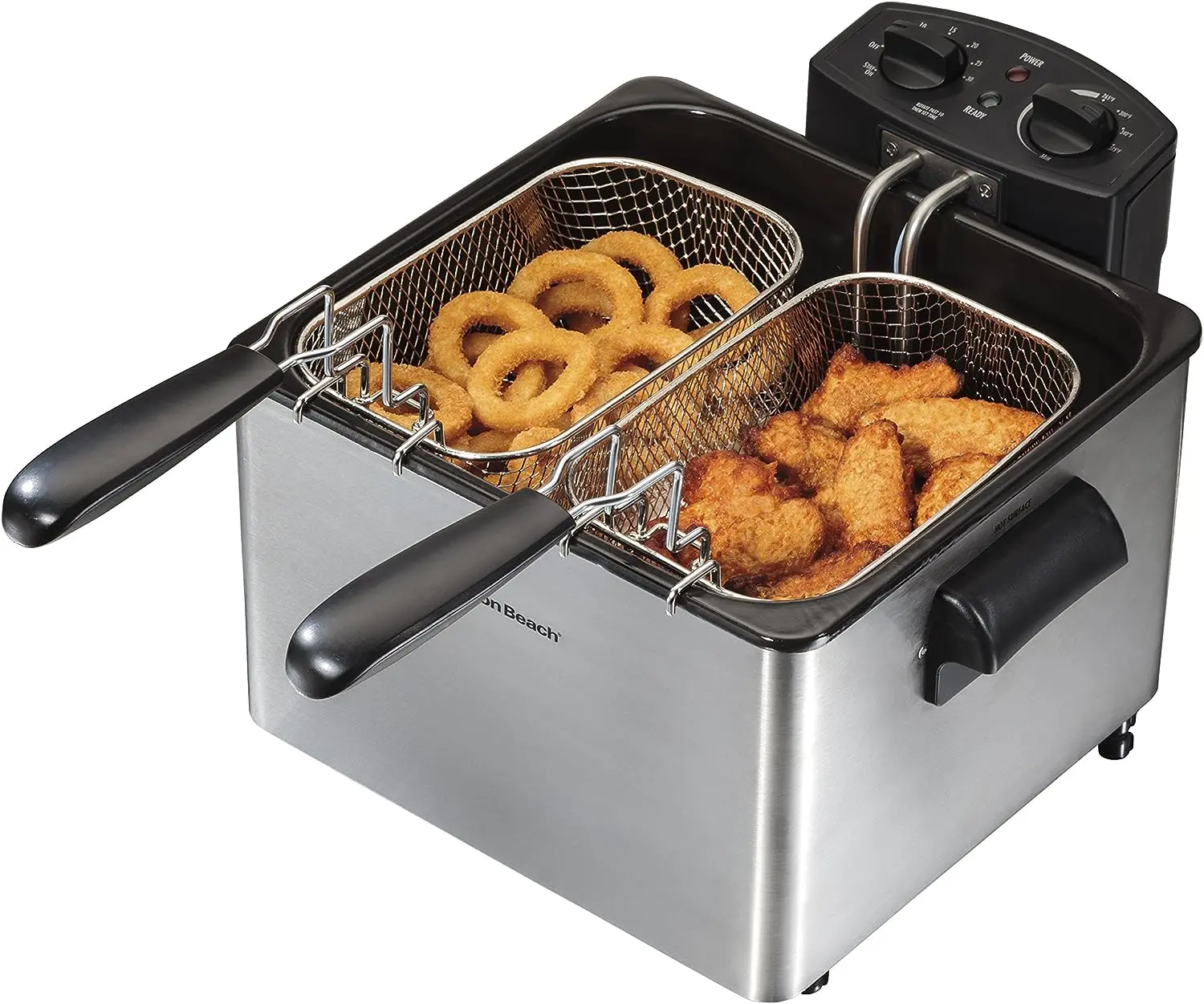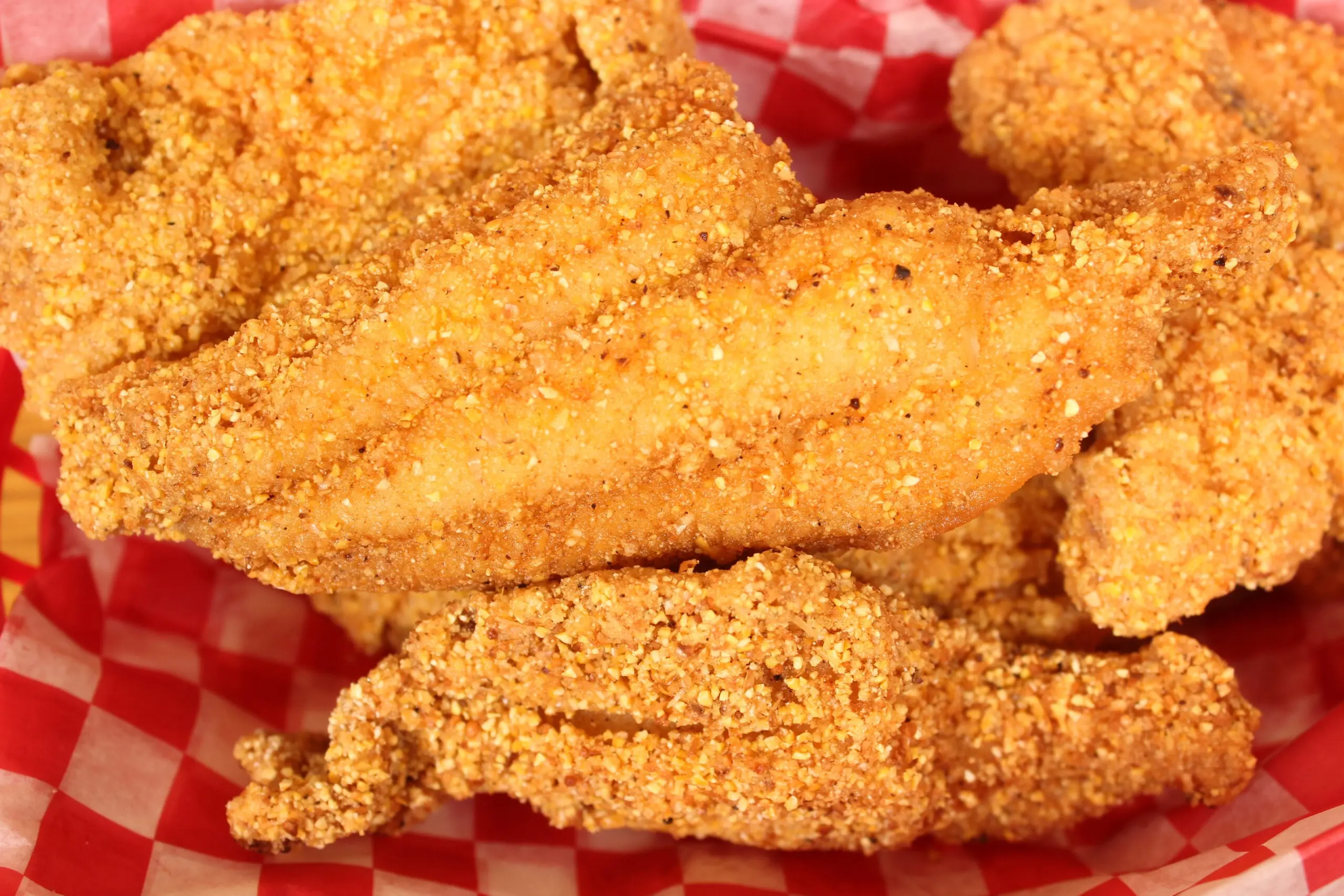Fried fish might be the ultimate comfort food, enjoyed with equal enthusiasm by Cajuns and Canadians. Even if you can’t cook anything else, knowing how to grill red meat over fire and how to fry fish in hot oil are essential skills for any outdoorsy person to learn.
I’ve eaten fresh walleye fillets rolled in crushed crackers and pan-fried in butter and slabs of cod heavily battered in the style of fish-n-chips. If you told me either of them was on the menu tonight, I’d be at the dinner table on time, and with a smile too. But given the choice, I prefer my fish fried southern style—crispy, with a thin but heavily seasoned cornmeal-based breading. That style is also easy to cook in volume, which is good because frying fish tends to attract a crowd. So, here’s how to fry fish southern style in five simple steps.
Step One: Catch the Best Fish for Frying

A mess of bluegills makes for a fine fish fry. Verbbaitum / Adobe Stock
Southern-fried recipes pair perfectly with any white, flaky fish. Members of the sunfish family, including bluegills, redears, bass (yes, bass)
, and crappies are perfect. All are easy to fillet, skin, and debone with an electric knife, leaving behind a perfect boneless fillet that’s ready for hot oil. Blue, channel, and flathead catfish are staples for a southern fish-fry, too, as are various saltwater species like red snapper and whiting.
Of course, you can bread and fry near anything and make it taste good. I’ve eaten walleyes and saugers, white bass, gar, buffalo, Asian carp, and stocker rainbow trout fried up in the southern fashion, and all of it tasted just fine. Some fish houses specialize in frying small, skinned channel catfish whole on the bone (called fiddlers), or sides of ribs from buffalo and suckers. Plenty of bream anglers prefer their panfish fried whole, too, sans the head and guts. The fish are either skinned or scaled ahead of time, and the crispy fins are considered a delicacy. That said, if you’re a deep-frying novice, smaller, thinner boneless fillets are easiest to manage and fry to a consistently crispy texture.
Step 2: Trim and Prep the Fish
One of the beauties of sunfish species, like small bass and crappies, is that the fillets are pretty much ready to go as soon as you cut them away. There’s no red line or fat to trim away, though I do like rinsing the fillets in cold water to remove scales and slime. Most other species, particular larger fish, do benefit from some trimming. I use a sharp fillet knife to remove any meat that’s red, yellow, or brown; basically, anything that’s not clean, white flesh.
While cleaning fish, keep a bowl of ice water handy so that you can chill fillets immediately. Fillets that stay too warm for too long get mushy. Though not necessary, soaking fillets in heavy saltwater overnight in a refrigerator helps firm them up. Some like to soak fillets in buttermilk or a mixture of milk and hot sauce for a couple hours prior to frying for additional flavor, too.
I prefer to keep it simple, and with my method, t’s important get the fillets somewhat dry before breading them. I start by draining them in the sink, and then I place my fillets onto a plate and pat away the excess moisture with a paper towel.
Step 3: Make the Breading

Flour, corn meal, Old Bay, and few other spices make the perfect breading. Amazon
In deep-frying lingo, batter is a wet coating that goes onto the meat prior to frying. Fish batters are usually flour-based, and the finished product will be of the fish-and-chips or Captain D’s style. This recipe uses a dry breading, which has no trouble sticking to fish fillets all by itself. Again, you can use buttermilk or a milk/egg wash to help the coating stick to the fillets. But in my experience, it’s easy to go overboard with egg wash and the like and end up with breading that sticks to the fillets in clumps. So long as your oil is consistently hot, dry breading makes for the most even coating.
You can find pre-mixed fish breading in just about any grocery store, and most of it is pretty good. But you can’t really claim that as your fried fish if you go that route. I prefer to make my own breading, and the good thing about doing that is you can customize the texture and flavor to your liking. I use a ratio of 2/3 yellow cornmeal to 1/3 flour, and I season it to taste with salt, pepper, garlic powder, onion powder, paprika, and Old Bay seasoning. I like Tony Chaucere’s Creole seasoning just as much as Old Bay, but it’s spicier, and my kid doesn’t care for spicy food. I mix it all together in a gallon Ziploc bag, drop in a few fillets at a time, and shake the bag to coat them. How do you know when the breading is seasoned properly? The easiest way is to fry a fillet, taste it, and adjust accordingly.
Step 4: Fry the Fish in Hot Oil
Maintaining the perfect oil temperature is critical for consistent fillets. I use vegetable oil, and 350-375 degrees is the magic temperature for crispy fillets that aren’t dripping with grease. Much hotter than that, and vegetable oil begins to smoke, which will cause your fillets will taste burned. Much cooler, and you’ll end up with breading and fillets that are soggy and greasy. Corn oil and peanut oil are also good for deep-frying, unless you’re allergic to peanuts (like I am). Olive oil is great for lightly pan-frying (it’s my go-to for cooking venison steaks), but the smoking point is too low for deep-frying fish.

A basic, double-basket electric fryer does the job if you’re not feeding to big a group. Amazon
Maybe it’s a hit to my country cred, but I’ll own it nonetheless: An electric deep fryer
is superior to a propane one for frying fish. The only time I prefer a large propane burner and basket is if I’m frying gallons of fillets for a large gathering. For cooking fish at home, and even for 10 or so people, an electric fryer with a pair of baskets is more consistent and plenty fast. Simply turn the temperature dial to 375 and when the light goes off, the oil is ready. After frying a couple baskets, give the oil a few minutes to reheat to the proper temperature. If you are using propane, keep a thermometer running at all times, and pay attention to the wind and your flame to keep the oil heated to perfection.
Step 5: Listen for the Finish

Cook until golden brown. LMPark Photos / Adobe Stock
It doesn’t take long to deep-fry a fish fillet, and small fillets like bluegill cook quickly, usually in about 90 seconds. Keep your fryer baskets in the oil as it heats up so that they stay hot. Fillets will stick to cold baskets. Fry a few fillets at a time—5 or 6 per basket—and give the baskets a good shake about halfway through the process, again, to keep the fillets from sticking.
Listen carefully for the sizzling to settle while frying; that’s a sign that the moisture has been cooked out of the fillets through and through, and they’re just about ready. Smaller fillets will begin floating to the top and at that point, they will be golden and crispy. Line a plate with a couple paper towels and dump the fillets onto it to drain. Finally, it’s the fish cook’s job—and one of life’s simple pleasures—to let a hungry kid sample the first few fillets and advise on how they taste.
![Field & Stream [dev]](https://images.ctfassets.net/fbkgl98xrr9f/1GnddAVcyeew2hQvUmrFpw/e4ca91baa53a1ecd66f76b1ef472932b/mob-logo.svg)





